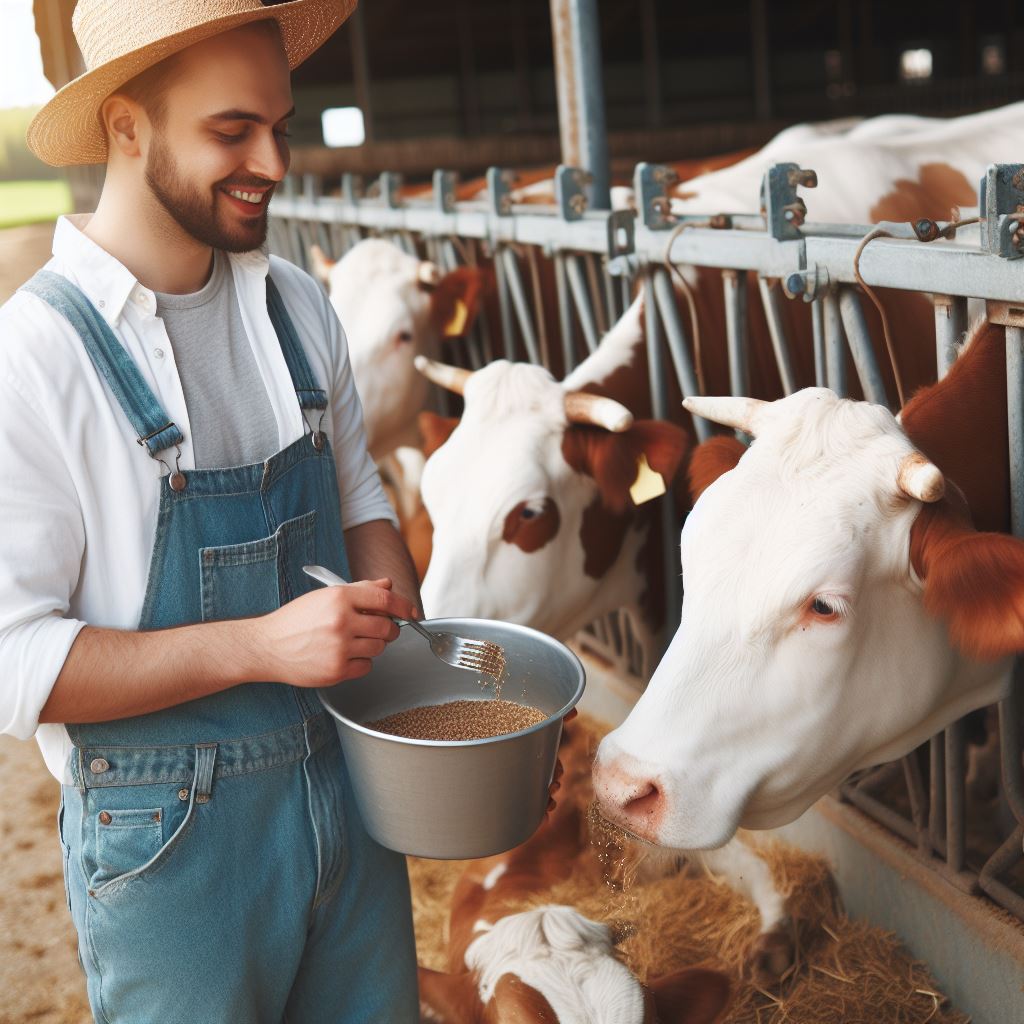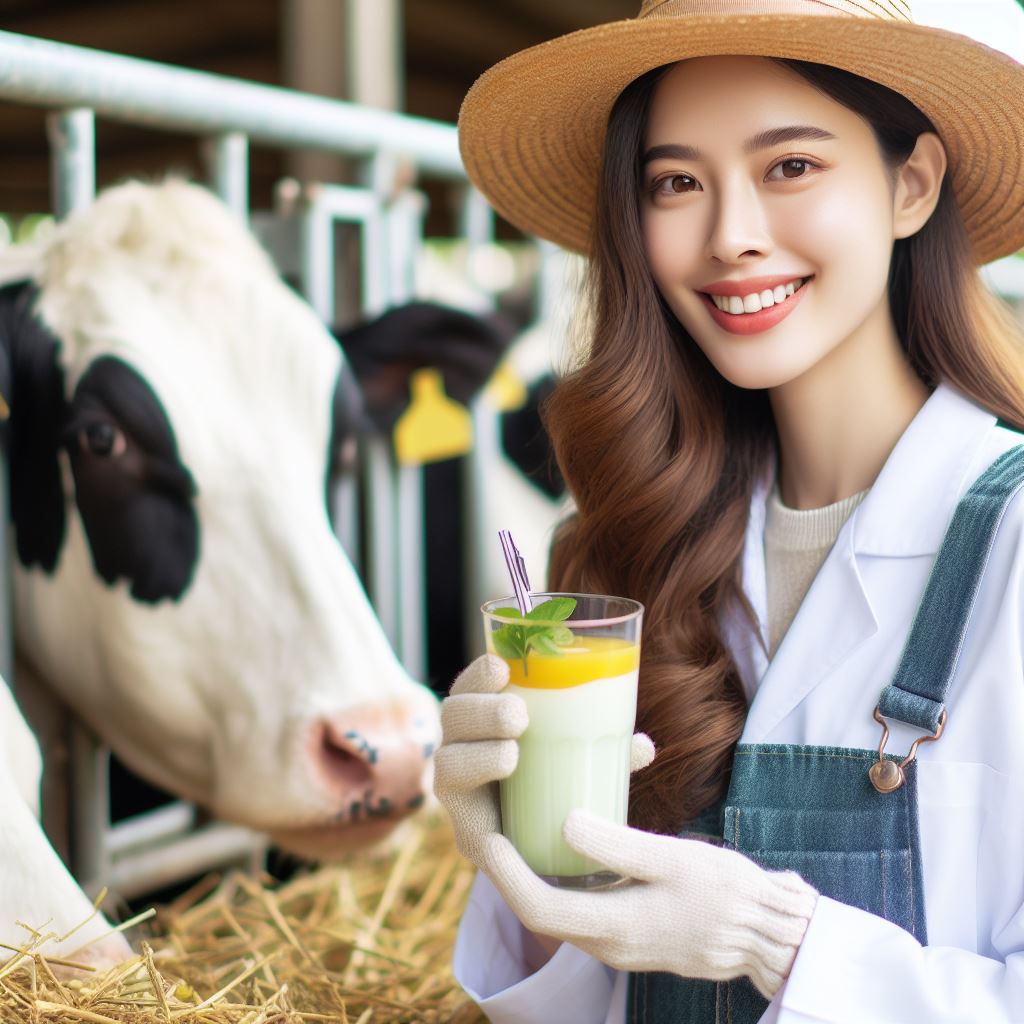Introduction
Precision agriculture refers to the use of technology and data analytics to optimize farming practices.
It offers numerous benefits such as increased crop productivity, reduced resource wastage, and improved sustainability.
One critical aspect of precision agriculture is its potential to significantly cut emissions in the agricultural sector.
Agriculture is a major contributor to greenhouse gas emissions, with activities like fertilizer application, livestock production, and machinery operation generating significant amounts of carbon dioxide, methane, and nitrous oxide.
These emissions not only contribute to climate change but also have detrimental effects on human health and the environment.
Therefore, it is crucial to find sustainable and efficient methods to reduce emissions in agriculture.
Precision agriculture is a promising solution to cut emissions in modern farming practices
Precision agriculture can be a powerful tool in combating emissions.
By utilizing data-driven techniques, farmers can precisely monitor and manage inputs such as fertilizers, pesticides, and water.
This targeted approach minimizes wastage and reduces emissions associated with excess use of these resources.
Furthermore, precision livestock farming enables farmers to optimize feed efficiency, waste management, and ventilation, thereby reducing methane emissions from livestock operations.
Additionally, the use of precision machinery and automated systems in agriculture can minimize fuel consumption and associated emissions.
Autonomous vehicles, drones, and robots equipped with advanced sensors and GPS technology enable farmers to efficiently manage their fields, monitor crop health, and apply treatments only where necessary.
The implementation of these technologies can revolutionize farming practices and lead to significant emission reductions.
In short, precision agriculture holds immense potential to cut emissions in modern farming practices.
Transform Your Agribusiness
Unlock your farm's potential with expert advice tailored to your needs. Get actionable steps that drive real results.
Get StartedBy embracing this technology-driven approach, farmers can optimize resource utilization, reduce waste, and minimize greenhouse gas emissions.
Governments, agricultural organizations, and farmers should collaborate to promote the adoption of precision agriculture as a sustainable solution for reducing emissions and ensuring a greener future for agriculture.
Understanding Precision Agriculture
Precision agriculture technologies
Precision agriculture, also known as satellite farming or site-specific crop management, is a modern farming approach that utilizes technology to increase efficiency and productivity.
It involves the use of various technologies such as sensors, drones, GPS, and robotics, among others.
- Sensors: These devices are used to collect data on soil moisture, temperature, nutrient levels, and plant growth. The data captured helps farmers to monitor the health of their crops and make informed decisions.
- Drones: Unmanned aerial vehicles are equipped with cameras and sensors to capture images and collect data from crops. They provide a bird’s-eye view, allowing farmers to detect diseases, pests, and nutrient deficiencies.
- GPS (Global Positioning System): GPS technology enables farmers to precisely locate and track their farming equipment, such as tractors and sprayers. This improves the accuracy of applying fertilizers, pesticides, and herbicides.
- Robotics: Robots and automated machines perform tasks such as planting seeds, harvesting crops, and applying chemicals. They minimize human error and increase efficiency in labor-intensive operations.
Benefits of precision agriculture in increasing efficiency and productivity
Precision agriculture offers numerous advantages that contribute to increased efficiency and productivity in farming.
- Resource optimization: By using precision agriculture technologies, farmers can optimize the use of resources such as water, fertilizers, and pesticides. This reduces waste and environmental impact while ensuring that crops receive the necessary nutrients.
- Yield maximization: With precise data on crop health and growth, farmers can identify and address issues early, leading to higher yields. They can also apply inputs selectively, targeting specific areas that require intervention.
- Cost reduction: By applying inputs only where needed and optimizing resource use, precision agriculture helps farmers reduce costs associated with excess fertilizers and chemicals. This improves profitability and sustainability.
- Environmental stewardship: Precision agriculture minimizes the release of harmful chemicals into the environment. By using technology to target interventions, farmers can reduce water pollution, soil degradation, and greenhouse gas emissions.
Role of data analytics and artificial intelligence in precision agriculture
Data analytics and artificial intelligence (AI) play a crucial role in precision agriculture, enabling farmers to make data-driven decisions and optimize farming practices.
- Data-driven decision making: Precision agriculture collects vast amounts of data from various sources. Through data analytics, farmers can analyze this information to gain insights into crop conditions, disease patterns, and weather fluctuations. These insights inform decision making and improve productivity.
- Predictive modeling: AI algorithms can analyze historical data and predict future outcomes. This helps farmers anticipate crop yield, water requirements, pest infestation risks, and market demands. It enables them to plan and adapt strategies accordingly.
- Real-time monitoring: With the help of AI, farmers can remotely monitor field conditions and receive alerts in real-time. For example, they can be notified when soil moisture levels are low, allowing them to take immediate action
- Smart farming systems: AI-powered farming systems can automate various tasks, such as irrigation, fertilization, and pest control. These systems can adjust inputs based on real-time data, optimizing resource allocation and improving overall efficiency.
In fact, precision agriculture harnesses the power of technology, data analytics, and artificial intelligence to revolutionize modern farming practices.
By leveraging these tools, farmers can achieve higher efficiency, increased productivity, and environmental sustainability.
Precision agriculture is a game-changer that can cut emissions while ensuring food security for a growing global population.
Read: Cover Cropping: Shield Against Carbon
Reducing Greenhouse Gas Emissions in Agriculture
Current challenges and environmental impact of traditional farming methods
- Traditional farming methods contribute to the release of greenhouse gases into the atmosphere.
- These emissions are a major contributor to global warming and climate change.
- The excessive use of synthetic fertilizers and pesticides in traditional farming practices is a major concern.
- These chemicals release nitrous oxide, a potent greenhouse gas that contributes to climate change.
- Deforestation for land clearing in agriculture also leads to the release of carbon dioxide.
- Moreover, traditional farming methods often result in soil degradation and loss of biodiversity.
- This further exacerbates the environmental impact of agriculture on greenhouse gas emissions.
- Therefore, it is clear that traditional farming methods are unsustainable and need to be addressed.
Various sources of greenhouse gas emissions in agriculture
- Methane is one of the main greenhouse gases emitted in agriculture.
- Cattle farming is a significant source of methane emissions due to enteric fermentation in cows.
- Rice cultivation also releases methane due to the anaerobic decomposition of organic matter in flooded paddy fields.
- Nitrous oxide is released from the excessive use of synthetic fertilizers in agriculture.
- Manure management, especially when improperly handled, produces methane and nitrous oxide emissions.
- Energy use for irrigation, machinery, and transportation in agriculture contributes to carbon dioxide emissions.
- These various sources of greenhouse gas emissions in agriculture require urgent mitigation measures.
Need for sustainable farming practices to address climate change
- Sustainable farming practices can significantly reduce greenhouse gas emissions in agriculture.
- Implementing precision agriculture techniques can reduce the use of synthetic fertilizers and pesticides.
- Precision agriculture utilizes technology to customize applications based on specific crop needs.
- This targeted approach minimizes excess use, thereby reducing nitrous oxide emissions.
- Adopting climate-smart farming methods, such as agroforestry, can help sequester carbon dioxide from the atmosphere.
- Integrating livestock and crop farming systems can effectively manage manure and methane emissions.
- Investing in renewable energy for on-farm operations can reduce carbon dioxide emissions.
- Furthermore, soil conservation practices, such as cover cropping and reduced tillage, improve soil health and increase carbon sequestration.
- It is crucial for farmers to make the transition to sustainable farming practices to combat climate change.
In essence, the environmental impact of traditional farming methods on greenhouse gas emissions is undeniable. The release of methane, nitrous oxide, and carbon dioxide from various agricultural activities contributes significantly to global warming and climate change.
To address this issue, sustainable farming practices, such as precision agriculture, climate-smart farming methods, and soil conservation techniques, must be adopted.
These practices would minimize the use of synthetic chemicals, manage manure properly, reduce energy consumption, and promote carbon sequestration.
It is essential for farmers and policymakers to recognize the need for sustainable farming practices and work together to implement them on a large scale.
By reducing emissions from agriculture, we can make significant progress in mitigating the effects of climate change and creating a more sustainable future for our planet.
Read: Water Conservation: Farming Carbon Link
How Precision Agriculture Cuts Emissions
Efficient use of fertilizers and pesticides
By efficiently managing fertilizers and pesticides, optimizing water usage, implementing precision planting and crop rotation, and minimizing fuel consumption through automation and advanced machinery, emissions associated with agricultural practices can be significantly reduced.
Traditionally, farmers used to apply fertilizers and pesticides uniformly across their fields, often leading to over-application and excess usage.
This process not only harmed the environment but also resulted in economic losses.
With precision agriculture, farmers can target specific areas that require fertilizers and pesticides, ensuring that their application is precise and only where necessary.
This targeted approach reduces the overall chemical usage, minimizing emissions and avoiding negative impacts on soil and water quality.
Optimal irrigation and water management techniques
Water management is another crucial aspect of precision agriculture that helps in emissions reduction.
By implementing optimal irrigation techniques such as drip irrigation, farmers can precisely deliver water directly to plant roots, reducing water wastage and energy consumption.
Monitoring soil moisture levels using sensors allows farmers to determine the exact water requirements of their crops, avoiding over-irrigation and its associated emissions.
Showcase Your Farming Business
Publish your professional farming services profile on our blog for a one-time fee of $200 and reach a dedicated audience of farmers and agribusiness owners.
Publish Your ProfilePrecision planting and crop rotation methods
Precision planting and crop rotation methods also contribute to emissions reduction.
By accurately placing seeds at the optimal depth and spacing, precision agriculture maximizes yield potential while minimizing the need for additional inputs such as herbicides.
Additionally, implementing crop rotation methods helps break pest and disease cycles, reducing the reliance on chemical treatments and further cutting emissions.
Minimizing fuel consumption through automation and advanced machinery
Fuel consumption in agriculture is a significant contributor to greenhouse gas emissions.
Precision agriculture addresses this issue by incorporating automation and advanced machinery.
Automated systems enable precise control and minimize overlaps during field operations, reducing fuel usage.
Advanced machinery, such as self-driving tractors, implements precision techniques while minimizing human involvement, leading to efficient operations and reduced emissions.
In general, precision agriculture offers innovative solutions to reduce emissions in the agricultural sector.
By promoting efficient use of fertilizers and pesticides, optimal irrigation and water management techniques, precision planting and crop rotation methods, and minimizing fuel consumption through automation and advanced machinery, precision agriculture contributes to a sustainable and environmentally friendly future for agriculture.
Read: Renewable Energy Use in Modern Farms
Success Stories and Case Studies
Examples of farms implementing precision agriculture techniques
- Smith Family Farm in Iowa adopted precision agriculture techniques, including variable rate technology.
- Clarkson Vineyard in California implemented precision irrigation systems to optimize water usage in their vineyards.
- The Johnson Dairy Farm in Wisconsin utilized precision feeding systems to reduce feed waste and improve milk production.
Results achieved in terms of emission reduction and economic benefits
Multiple case studies have shown significant emission reductions and economic benefits through the adoption of precision agriculture techniques:
- Smith Family Farm reduced their emissions by 20% and achieved a 15% increase in crop yields.
- Clarkson Vineyard reduced water usage by 30% and experienced a 25% improvement in grape quality.
- The Johnson Dairy Farm decreased methane emissions by 40% and saw a 10% increase in milk production.
Testimonials from farmers and researchers
The success stories of precision agriculture have been widely acknowledged by farmers and researchers:
- “Implementing precision agriculture techniques completely transformed our farming operations. We have not only reduced emissions but also improved our profitability.” – John Smith, Smith Family Farm.
- “Precision irrigation has revolutionized our vineyard management. We are now more sustainable and producing higher-quality grapes.” – Sarah Clarkson, Clarkson Vineyard.
- “Precision feeding systems have been a game-changer for our dairy farm. We are actively contributing to emission reduction while increasing milk production.” – Mark Johnson, Johnson Dairy Farm.
Researchers studying the implementation of precision agriculture have also provided positive endorsements:
- “Our data analysis clearly demonstrates the environmental and economic benefits of precision agriculture in reducing emissions and improving productivity.” – Dr. Rebecca Davis, Agricultural Research Institute.
- “Precision agriculture techniques have the potential to revolutionize sustainable farming practices and address climate change challenges.” – Dr. Michael Anderson, Environmental Science Research Center.
These testimonials and endorsements emphasize the real-world impact of precision agriculture on emission reduction and economic benefits.
They highlight the transformative effects it has on individual farms, sectors, and the overall agricultural industry.
Read: Livestock Management: Reducing Methane

Potential Challenges and Limitations
Initial investment costs and technology adoption challenges
- Implementing precision agriculture requires significant initial investment in equipment and technology.
- Many farmers may hesitate to adopt precision agriculture due to the high costs involved.
- It can be challenging for smaller farms to afford the necessary technology and equipment.
- Reluctance to invest in new technology may limit the widespread adoption of precision agriculture.
- Government grants and subsidies may be necessary to help farmers overcome the financial barriers.
Need for training and education for farmers
- Farmers need to acquire the skills and knowledge to effectively use precision agriculture techniques.
- Training programs should be developed to educate farmers about the benefits and implementation of precision agriculture.
- Lack of awareness and understanding about precision agriculture could hinder its adoption in the farming community.
- Workshops and seminars can help farmers understand how to integrate precision agriculture into their practices.
- Collaboration with agricultural universities and research institutions can provide valuable resources for farmer education.
Integration of precision agriculture with existing farming systems
- Precision agriculture techniques need to be seamlessly integrated with traditional farming methods.
- Farmers may face challenges in adapting their existing practices to incorporate precision agriculture principles.
- Compatibility issues between different precision agriculture technologies may arise, requiring additional adjustments.
- Existing infrastructure and machinery may need to be upgraded or modified to accommodate precision agriculture.
- A systematic approach is required to ensure a smooth transition from conventional farming to precision agriculture.
In brief, while precision agriculture offers numerous benefits in reducing emissions and improving efficiency, there are several challenges and limitations that need to be addressed.
The high initial investment costs and technology adoption challenges may deter some farmers from embracing precision agriculture.
Therefore, government support in the form of grants and subsidies can play a crucial role in encouraging its widespread adoption.
Additionally, training and education programs must be developed to equip farmers with the necessary skills and knowledge to effectively implement precision agriculture techniques.
Lastly, integrating precision agriculture with existing farming systems may require adjustments and upgrades, but with a systematic approach, it can be successfully implemented.
By overcoming these challenges, precision agriculture has the potential to revolutionize the agricultural industry and contribute significantly to emission reduction efforts.
Government Policies and Support
Current initiatives and incentives to promote precision agriculture
- Financial support: Governments provide funding and subsidies to farmers to invest in precision agriculture technologies.
- Education and training: Government programs offer training and workshops to educate farmers on the benefits and implementation of precision agriculture.
- Research and innovation grants: Government funds research projects to develop advanced precision agriculture techniques and tools.
Importance of policy support for widespread adoption
- Economic growth: Precision agriculture can boost productivity and profitability in the agricultural sector, leading to overall economic growth.
- Environmental sustainability: By reducing inputs and optimizing resource use, precision agriculture helps minimize the environmental impact of farming.
- Food security: With a growing global population, precision agriculture ensures efficient food production to meet the increasing demand.
- Rural development: Policy support for precision agriculture can benefit rural communities by creating job opportunities and improving quality of life.
Collaboration between government, industry, and academia
- Policy formulation: Governments collaborate with industry experts and academic researchers to develop effective policies for promoting precision agriculture.
- Knowledge transfer: Partnerships between academia and industry facilitate the transfer of knowledge and innovation in precision agriculture practices.
- Technology adoption: Government-industry collaboration helps farmers access and adopt the latest precision agriculture technologies and tools.
- Data sharing and analysis: Governments work with industry and academic institutions to collect and analyze data, enabling evidence-based policy decisions.
In a nutshell, government policies and support play a crucial role in promoting and facilitating the widespread adoption of precision agriculture.
Current initiatives include financial support, education and training programs, and research grants.
Policy support for precision agriculture is important for economic growth, environmental sustainability, food security, and rural development.
Collaborative efforts between the government, industry, and academia are essential for policy formulation, knowledge transfer, technology adoption, and data analysis.
With continued support, precision agriculture can revolutionize the agricultural sector and contribute to a more sustainable and efficient food production system.
Conclusion
Precision agriculture holds significant potential for further advancements in the farming industry.
By embracing this innovative approach, farmers can not only reduce carbon emissions but also improve yields and decrease waste.
Moreover, precision agriculture offers long-term environmental and economic benefits.
Through the use of advanced technologies such as GPS, sensors, and drones, farmers can optimize the use of resources, minimize chemical inputs, and reduce greenhouse gas emissions.
This not only helps preserve the environment but also contributes to sustainable farming practices.
Furthermore, precision agriculture enables farmers to make data-driven decisions, resulting in improved crop management, increased productivity, and cost savings.
By utilizing real-time data on soil conditions, weather patterns, and crop health, farmers can optimize irrigation, fertilization, and pest control, resulting in higher yields with less waste.
This transformative approach to agriculture also offers long-term economic benefits.
By reducing input costs and improving resource efficiency, farmers can increase profitability and economic resilience.
Additionally, by implementing sustainable practices, farmers can tap into the growing demand for environmentally friendly products, opening up new market opportunities.
Therefore, there is a crucial need for farmers and policymakers to fully embrace precision agriculture.
With supportive policies, financial incentives, and investments in research and development, precision agriculture can become the norm rather than the exception.
This will require collaboration between farmers, technology providers, and government organizations.
Showcase Your Farming Business
Publish your professional farming services profile on our blog for a one-time fee of $200 and reach a dedicated audience of farmers and agribusiness owners.
Publish Your ProfilePrecision agriculture allows us to cut emissions, improve productivity, and promote sustainable farming practices.
Embracing this approach is not only essential for mitigating climate change but also for securing a more resilient and prosperous future for the agricultural sector.
[E-Books for Sale]
500 Farming Tax Laws Simplified: The Ultimate Global Guide for Farmers
$19.99 • 500 Farming Tax Laws • 154 pages
Maximize your farm’s savings with 500 simplified tax laws, tips, and strategies in this essential farmer’s guide!
See All 500 Farming Tax Laws of this E-Book
2,000 Technological Solutions to Revolutionize Your Agribusiness: A Comprehensive Global Guide for Farmers
$19.99 • 2,000 Technological Solutions • 343 pages
Discover 2,000 cutting-edge technologies to transform your agribusiness. Boost productivity and sustainability today!




